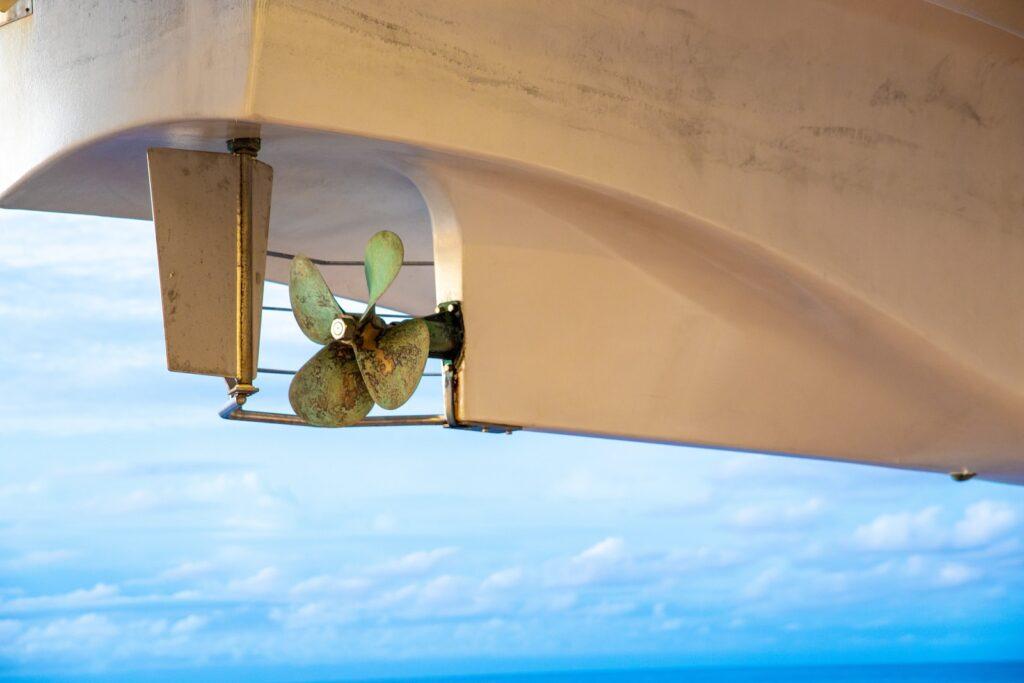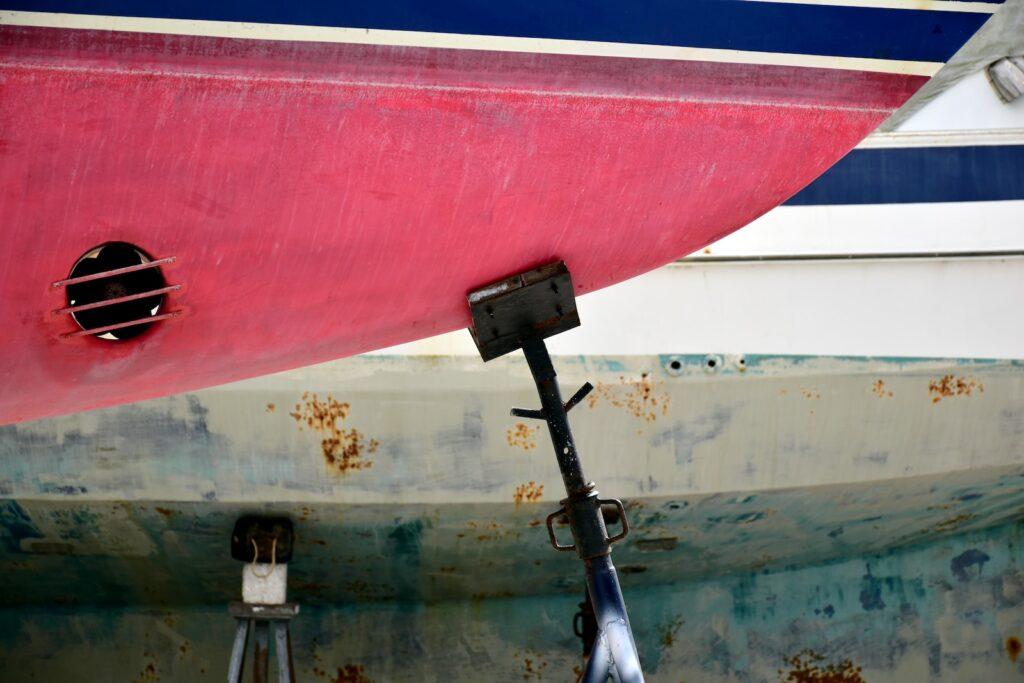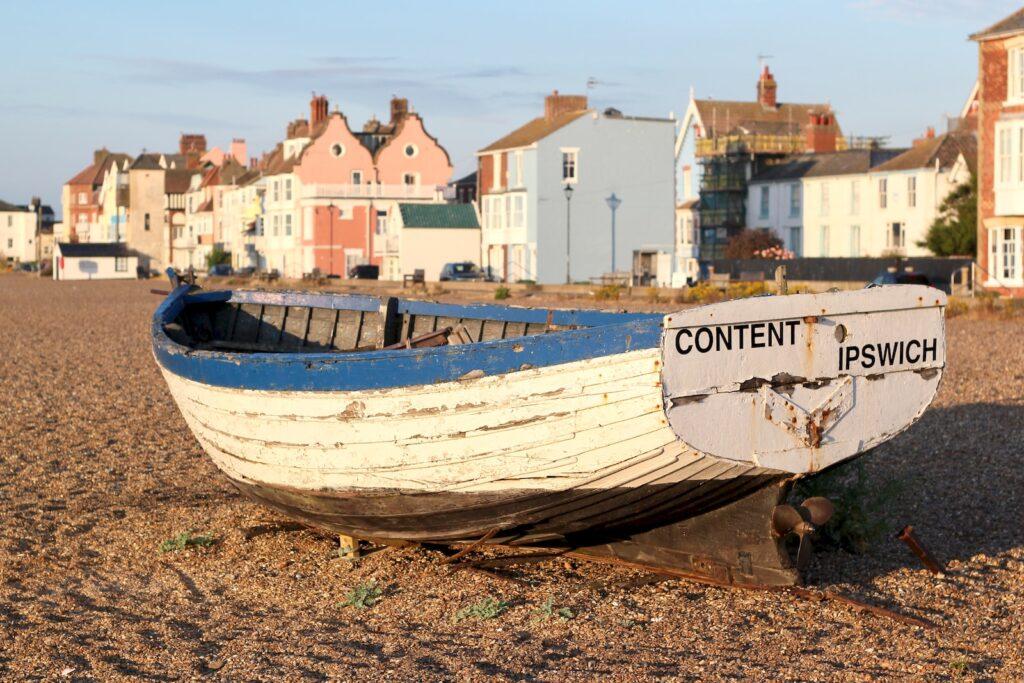How to Choose the Right Boat Propeller
Are you in search of the perfect boat propeller? Look no further! This article will guide you through the process of choosing the right propeller for your boat. Consider your boat’s specifications, understand the different types of propellers, and determine the perfect size. Don’t forget to evaluate your boating needs and preferences. Expert advice and reviews will also come in handy.
Key Takeaways
- Size and weight of the boat affect propeller efficiency
- Different boat types require specific propeller designs
- Material of the propeller determines durability and resistance to damage
- Consult manufacturer’s recommendations and seek expert advice for size selection
Consider Your Boat’s Specifications
To choose the right boat propeller, you need to consider your boat’s specifications. When it comes to freedom on the water, having the right propeller can make all the difference.
The first thing you should consider is the size and weight of your boat. A propeller that’s too small may not be able to propel your boat efficiently, while a propeller that’s too large may strain your engine.
Think about the type of boat you have. Is it a fishing boat, a speedboat, or a pontoon? Each type of boat requires a different propeller design to optimize performance.
Pay attention to the number of blades on the propeller. More blades provide better acceleration and maneuverability, while fewer blades offer increased top speed.
Consider the material of the propeller. Aluminum is lightweight and cost-effective, but stainless steel is more durable and resistant to damage.
Understand the Different Propeller Types
When considering the right boat propeller, it’s important to understand the different types available. As someone who desires freedom on the water, you want to make sure you choose the propeller that best suits your needs. There are three main types that you should familiarize yourself with.
We’ve the aluminum propellers. These are lightweight and cost-effective. They’re great for smaller boats and casual boating activities. Aluminum propellers are easy to repair and replace, making them a popular choice among boaters.
We’ve stainless steel propellers. These are more durable and can withstand higher speeds and rougher conditions. They’re ideal for larger boats and those who enjoy high-performance boating. Stainless steel propellers provide better acceleration and fuel efficiency, giving you more power and control on the water.
Lastly, we’ve composite propellers. These are made from a combination of materials, such as plastic or rubber, and are designed for specific purposes. They’re often used in situations where noise reduction is important, such as fishing or wildlife observation. Composite propellers are also resistant to damage from rocks and other underwater obstacles.
Understanding the different types of propellers available will help you make an informed decision when choosing the right one for your boat. Consider your boating activities, boat size, and performance requirements to find the propeller that will give you the freedom and enjoyment you desire on the water.
Determine the Right Size for Your Boat
Now let’s delve into determining the right size for your boat when choosing the propeller. Finding the correct propeller size is crucial for maximizing your boat’s performance and efficiency.
To determine the right size, you need to consider two key factors: diameter and pitch.
Let’s talk about diameter. The diameter refers to the distance across the circle formed by the rotating blades. Choosing the right diameter depends on your boat’s horsepower, weight, and intended use. Generally, larger boats with more horsepower require larger propeller diameters, while smaller boats with less horsepower need smaller diameters.
Pitch refers to the distance a propeller moves forward in one complete rotation. It determines how efficiently your boat will move through the water. For more speed, you’ll want a higher pitch, while a lower pitch provides more power for towing or hauling heavy loads.
To determine the right size for your boat, consider factors such as your boat’s size, weight, engine power, and the desired performance. It’s essential to consult the manufacturer’s recommendations and seek advice from experts if needed.
Evaluate Your Boating Needs and Preferences
Considering your boating needs and preferences is crucial when choosing the right boat propeller. As someone who desires freedom on the water, it’s important to select a propeller that aligns with your specific requirements and style of boating.
Start by evaluating the type of water activities you enjoy. Are you a speed enthusiast, craving the thrill of racing across the waves? If so, a high-performance propeller with a higher pitch and fewer blades might be the perfect fit for you.
On the other hand, if you prefer leisurely cruises and fishing expeditions, a propeller with a lower pitch and more blades might provide better maneuverability and fuel efficiency.
Take into account any existing propeller issues or limitations you have encountered in the past. By understanding your boating needs and preferences, you can make an informed decision and select the right boat propeller that will enhance your freedom and enjoyment on the water.

Understanding Propeller Basics
Propellers come with a set of numbers known as diameter and pitch. Diameter refers to the total distance that a single rotation of the propeller will cover. In simple terms, it’s the distance across the circular path that the propeller tips would make if you could see it in action. Larger boats usually require propellers with a larger diameter to effectively push more water.
The pitch, on the other hand, is the theoretical distance the propeller would move forward in one complete rotation, assuming no “slippage” between the propeller blade and the water. The pitch is akin to the gears on a car; a higher pitch equates to a higher gear, providing higher speed but requiring more power to get it moving initially.
Propellers are either right-hand rotation (RHR), meaning they spin clockwise, or left-hand rotation (LHR), spinning counterclockwise. RHR is common for single-engine boats, while LHR is typically seen on one of the twin engines on a dual-engine boat to balance the boat and prevent leaning or “listing.”
Diameter and Pitch
The diameter of your propeller is the distance across the circle that the propeller would make if it were to spin in a solid surface. Bigger boats need larger diameter propellers to push more water, while smaller boats can get by with smaller ones. The pitch is the distance a propeller would theoretically move forward in one revolution if it were moving through a solid. Higher pitch propellers are like higher gears on a car, better for speed but tougher to get moving.
Rotation
Most boat propellers are right-hand rotation (RHR), meaning they spin clockwise and are often used on single-engine boats. Left-hand rotation (LHR) propellers spin counterclockwise and are often used on twin-engine boats to balance the torque and prevent the boat from listing.
Choosing the Right Material
The most common materials you’ll encounter in the propeller world are aluminum and stainless steel. Now, let’s break it down.
Aluminum propellers are like that trusty, reliable friend who’s always ready for a weekend adventure. They’re a fantastic choice for smaller boats or lighter loads. Why? Because they offer solid performance, they’re pretty cost-effective, and have the added benefit of being a bit of a “safety fuse” when you strike a submerged object — they’ll give way before your drive does, which could save you some serious repair costs.
Stainless steel propellers are more like that friend who spends half their life at the gym. They’re tough, and they can handle just about anything you throw at them. Sure, they’re a bit pricier, but they make up for it by offering better overall performance and fuel efficiency. They’re particularly good for larger boats or heavy loads because they’re less likely to flex under pressure. And when it comes to durability, stainless steel is king. They stand up to debris or the occasional mishap better than their aluminum counterparts.

Aluminum Propellers
Aluminum propellers are a great choice for smaller boats and lighter loads. They’re cost-effective, offer good performance, and are less likely to be damaged if you hit a submerged object. However, they’re not as durable as their stainless steel counterparts, so they might not last as long under heavy use.
Stainless Steel Propellers
Stainless steel propellers are stronger and more durable than aluminum. They’re more expensive but can provide better performance and fuel efficiency, particularly for larger boats or heavy loads. They’re also less likely to sustain damage from debris or the occasional grounding.
Deciding on Number of Blades
The number of blades on your propeller can also impact its performance. Most propellers have three or four blades, but you can also find options with five or even six blades.
Three-Blade Propellers
Three-blade propellers are a popular choice for many boaters. They offer a good balance of speed, efficiency, and handling. They’re often less expensive than four-blade options, making them a good all-around choice.
Four-Blade Propellers
Four-blade propellers offer better acceleration and handling at low speeds, making them a great choice for activities like water skiing or wakeboarding. They can also provide a smoother ride in rough water. However, they may be slightly slower at top speeds compared to three-blade options.
Custom Propellers for Special Cases
Custom propellers are specifically designed and manufactured to cater to your unique requirements. Whether your boat has a powerful engine that needs to handle high speeds or you regularly traverse shallow or debris-filled waters, a custom propeller can be a game-changer.
If you’ve got a speed boat, you might benefit from a custom propeller that’s designed to handle high speeds and quick turns, keeping your boat stable and under control even when you’re pushing it to the limits.
Special Propellers for High-Performance Boats
If you’ve got a high-performance boat or one that’s used for a particular purpose like wakeboarding or water skiing, you might need a custom propeller designed to handle these unique demands.
Unique Conditions Require Unique Solutions
If you often find yourself boating in unusual conditions – like extremely shallow waters or areas with lots of debris – you might benefit from a specialized propeller that can handle these challenges without damage or reduced performance.
Wrap Up and Next Steps
Choosing the right boat propeller is a balance of science and art, and a keen understanding of your boat, your engine, and your typical boating conditions. But remember, you’re not alone in this!
Take the Time to Experiment
It’s okay to try a few different options to see what works best. As long as you stay within the recommended specs for your engine, a little bit of trial and error won’t hurt and could help you find your boat’s perfect match.
Seek Advice from the Community
Don’t hesitate to tap into the wealth of knowledge available in the boating community. Online forums, marina mates, or your local boat dealer can all provide invaluable insights.
Reassess Your Choice Over Time
As you gain experience, your boating style or conditions may change. That means the ideal propeller might change, too. Regularly reassessing your choice can help ensure you always have the best propeller for your needs.
Professional Help is Always Available
If you’re feeling overwhelmed, remember that professional help is always available. Boat mechanics and propeller specialists have the training and experience to help guide you through this process, ensuring you find the propeller that’s just right for you.
At the end of the day, the goal is to enjoy your time out on the water. A little time and effort spent on choosing the right boat propeller can go a long way towards making every boating outing a great one.

Factors to Consider when Choosing a Boat Propeller
It’s about aligning with your boat’s needs and your nautical dreams. Here are some crucial factors you should consider.
You’ve got to think about the material. Aluminum or stainless steel? While aluminum is more wallet-friendly and works great for smaller boats, stainless steel offers unmatched durability and performance for larger, speedier vessels.
To make sure your engine’s horsepower isn’t just horsing around, you need to match your propeller’s diameter and pitch to your engine’s specs. Bigger isn’t always better, so get friendly with your owner’s manual or consult a pro.
Don’t forget about the number of blades. Three, four, five – each offers its own blend of speed, acceleration, and handling capabilities. Think about what kind of boating you’ll be doing, whether it’s leisurely cruising, high-speed watersports, or long-haul voyaging, and choose accordingly.
Boat’s Purpose
A boat used for leisure cruising might require a different propeller compared to one used for high-speed racing or heavy towing.
Engine’s Specifications
The propeller must be compatible with the boat’s engine specifications including horsepower and RPM range. A mismatch could lead to poor performance or even damage.

Boat propeller sizing guide
You’ll need to know three key things — your boat’s horsepower, its engine’s RPM range, and the diameter and pitch of the propeller.
Think of diameter as the ‘powerhouse’, helping your boat get moving from a standstill. On the flip side, pitch is your ‘speed demon’, deciding how quickly your boat slices through the water.
Finding the sweet spot between diameter and pitch is the name of the game. Too much of either, and you’ll be putting unnecessary strain on your engine. Too little, and your engine might rev high without getting you anywhere fast.
FAQs
Why is choosing the right boat propeller important?
Choosing the right boat propeller is crucial for optimal boat performance and fuel efficiency. An incorrect propeller can lead to poor fuel economy, reduced speed, and unnecessary strain on your engine. Plus, the right propeller will ensure smoother rides and improved handling.
How does boat size affect the choice of propeller?
The size and weight of your boat significantly impact the choice of propeller. Larger, heavier boats require propellers with larger diameters and lower pitch to move the greater mass of water necessary to get them moving. Conversely, smaller, lighter boats can use propellers with a smaller diameter and higher pitch.
How do I know if my current propeller is the wrong size?
Signs that your propeller may be the wrong size include poor fuel economy, difficulty getting the boat on plane, inability to reach the top RPM range, and sluggish performance. If your engine is over-revving or struggling, it may be time to reconsider your propeller size.
